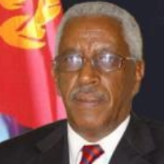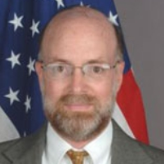Eritrea
Located in the strategic Horn of Africa, Eritrea’s short history has been marred by warfare and internal violence. When it broke away from Ethiopia in 1991, Eritrea took with it Ethiopia’s access to the Red Sea. Eritrea’s long coastline makes it important to world powers like the United States because its close proximity allows it to potentially affect shipping in the Red Sea. This strategic value has not, however, resulted in good relations with the US. On the contrary, the US forged a strong military-based relationship with Ethiopia, which engaged Eritrea in a bloody border conflict from 1998-2000. Eritrea’s offer for the US to use its port facilities for American naval ships has not been accepted by American officials, and in recent years, diplomatic ties between the two nations have become strained. In 2001, two Eritrean nationals working at the US Embassy in Asmara were arrested and have remained in prison since without trial. In 2007, the US closed Eritrea’s mission in California, and furthermore, the State Department began threatening to list Eritrea as a state sponsor of terrorism unless the government stopped funding Islamic rebels in Somalia. The Eritrean government has denied supporting Somali insurgents. The country also has been criticized by US and human rights officials for the country’s poor human rights record.
Lay of the Land: Eritrea is located in the Horn of Africa and is bordered on the northeast and east by the Red Sea, on the west and northwest by Sudan, on the south by Ethiopia, and on the southeast by Djibouti. The country has a high central plateau that varies from 1,800 to 3,000 meters (6,000-10,000 ft.) above sea level. A coastal plain, western lowlands, and some 300 islands comprise the remainder of Eritrea's landmass. Eritrea has no year-round rivers.
In the late 1880s Italy purchased the Red Sea port of Assab and established Eritrea as a colony of Italy with a market-based agricultural economy. At its peak at the beginning of World War II, 70,000 Italians lived in the colony. The Italians treated the Eritreans as little more than cheap labor, but they did develop a reasonable infrastructure that included railway lines, all-weather roads and two airports. When Italian forces were driven out Ethiopia and Eritrea in 1941, the Allied Powers gave Eritrea to Great Britain to rule as a protectorate.
The US consulate in Asmara was first established in 1942. In 1953, the United States signed a mutual defense treaty with Ethiopia. The treaty granted the United States control and expansion of the important British military communications base at Kagnew near Asmara. The US military turned the facility into a major spy base for the National Security Agency. In the 1960s, as many as 4,000 American military personnel were stationed at Kagnew.
Noted Eritrean-American
Eritrean President Accuses US of Endangering the World
The State Department reported in 2008 that the Eritrean government continued to have a poor human rights record, and authorities continued to commit numerous serious abuses. Problems included: “abridgement of citizens' right to change their government through a democratic process; unlawful killings by security forces; torture and beating of prisoners, sometimes resulting in death; arrest and torture of national service evaders, some of whom reportedly died of abuses while in detention; harsh and life threatening prison conditions; arbitrary arrest and detention, including of family members of national service evaders; executive interference in the judiciary and the use of a special court system to limit due process; infringement on privacy rights; and roundups of young men and women for national service.”
Robert Gordon Houdek
Appointment: Nov 22, 1993
Presentation of Credentials: Dec 31, 1993
Termination of Mission: Left post, Sep 10, 1996
Appointment: Jul 2, 1996
Presentation of Credentials: Sep 29, 1996
Termination of Mission: Left post, May 11, 1997
Appointment: Jun 29, 1998
Presentation of Credentials: Aug 20, 1998
Termination of Mission: Left post Aug 12, 2001
Appointment: Jul 16, 2001
Presentation of Credentials: Oct 3, 2001
Termination of Mission: Left post, Jul 16, 2004
Appointment: May 12, 2004
Presentation of Credentials: Oct 21, 2004
Termination of Mission: Left post, Jun 2, 2007
 Ghebremariam, Ghirmai
Ghebremariam, Ghirmai
- Table of Contents
- News
- Overview
- Basic Information
- History
- Newspapers
- History of U.S. Relations with Eritrea
- Current U.S. Relations with Eritrea
- Where Does the Money Flow
- Controversies
- Human Rights
- Debate
- Past Ambassadors
- Ambassador to the U.S.
- Embassy Web Site in the U.S.
- Comments
- Leave a comment
U.S. Ambassador to Eritrea

A member of the Senior Foreign Service, McMullen has served overseas as deputy principal officer in Cape Town, South Africa; economic officer in Libreville, Gabon; political officer in Colombo, Sri Lanka; and vice consul in Santo Domingo, Dominican Republic.
Located in the strategic Horn of Africa, Eritrea’s short history has been marred by warfare and internal violence. When it broke away from Ethiopia in 1991, Eritrea took with it Ethiopia’s access to the Red Sea. Eritrea’s long coastline makes it important to world powers like the United States because its close proximity allows it to potentially affect shipping in the Red Sea. This strategic value has not, however, resulted in good relations with the US. On the contrary, the US forged a strong military-based relationship with Ethiopia, which engaged Eritrea in a bloody border conflict from 1998-2000. Eritrea’s offer for the US to use its port facilities for American naval ships has not been accepted by American officials, and in recent years, diplomatic ties between the two nations have become strained. In 2001, two Eritrean nationals working at the US Embassy in Asmara were arrested and have remained in prison since without trial. In 2007, the US closed Eritrea’s mission in California, and furthermore, the State Department began threatening to list Eritrea as a state sponsor of terrorism unless the government stopped funding Islamic rebels in Somalia. The Eritrean government has denied supporting Somali insurgents. The country also has been criticized by US and human rights officials for the country’s poor human rights record.
Lay of the Land: Eritrea is located in the Horn of Africa and is bordered on the northeast and east by the Red Sea, on the west and northwest by Sudan, on the south by Ethiopia, and on the southeast by Djibouti. The country has a high central plateau that varies from 1,800 to 3,000 meters (6,000-10,000 ft.) above sea level. A coastal plain, western lowlands, and some 300 islands comprise the remainder of Eritrea's landmass. Eritrea has no year-round rivers.
In the late 1880s Italy purchased the Red Sea port of Assab and established Eritrea as a colony of Italy with a market-based agricultural economy. At its peak at the beginning of World War II, 70,000 Italians lived in the colony. The Italians treated the Eritreans as little more than cheap labor, but they did develop a reasonable infrastructure that included railway lines, all-weather roads and two airports. When Italian forces were driven out Ethiopia and Eritrea in 1941, the Allied Powers gave Eritrea to Great Britain to rule as a protectorate.
The US consulate in Asmara was first established in 1942. In 1953, the United States signed a mutual defense treaty with Ethiopia. The treaty granted the United States control and expansion of the important British military communications base at Kagnew near Asmara. The US military turned the facility into a major spy base for the National Security Agency. In the 1960s, as many as 4,000 American military personnel were stationed at Kagnew.
Noted Eritrean-American
Eritrean President Accuses US of Endangering the World
The State Department reported in 2008 that the Eritrean government continued to have a poor human rights record, and authorities continued to commit numerous serious abuses. Problems included: “abridgement of citizens' right to change their government through a democratic process; unlawful killings by security forces; torture and beating of prisoners, sometimes resulting in death; arrest and torture of national service evaders, some of whom reportedly died of abuses while in detention; harsh and life threatening prison conditions; arbitrary arrest and detention, including of family members of national service evaders; executive interference in the judiciary and the use of a special court system to limit due process; infringement on privacy rights; and roundups of young men and women for national service.”
Robert Gordon Houdek
Appointment: Nov 22, 1993
Presentation of Credentials: Dec 31, 1993
Termination of Mission: Left post, Sep 10, 1996
Appointment: Jul 2, 1996
Presentation of Credentials: Sep 29, 1996
Termination of Mission: Left post, May 11, 1997
Appointment: Jun 29, 1998
Presentation of Credentials: Aug 20, 1998
Termination of Mission: Left post Aug 12, 2001
Appointment: Jul 16, 2001
Presentation of Credentials: Oct 3, 2001
Termination of Mission: Left post, Jul 16, 2004
Appointment: May 12, 2004
Presentation of Credentials: Oct 21, 2004
Termination of Mission: Left post, Jun 2, 2007
 Ghebremariam, Ghirmai
Ghebremariam, Ghirmai
Comments
U.S. Ambassador to Eritrea

A member of the Senior Foreign Service, McMullen has served overseas as deputy principal officer in Cape Town, South Africa; economic officer in Libreville, Gabon; political officer in Colombo, Sri Lanka; and vice consul in Santo Domingo, Dominican Republic.







Comments